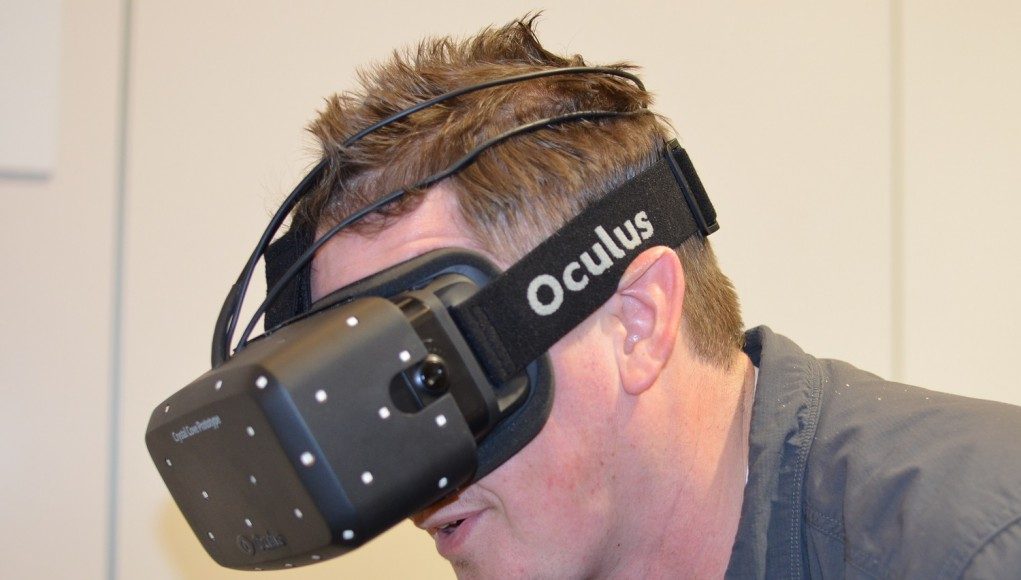At CES 2014, Road to VR had the opportunity to meet with Palmer Luckey, co-founder of Oculus and inventor of the Oculus Rift, and Nate Mitchell, VP of Product at Oculus. We got our hands on the much anticipated ‘Crystal Cove’ Oculus Rift prototype and sat down to have the dynamic duo answer our curious inquiries.
Yesterday Paul and I got our first chance to try the Oculus Rift ‘Crystal Cove’ prototype featuring positional tracking and low-persistence display technology. While much of the hubbub from the press has been about the (very impressive) positional tracking, Luckey and Mitchell told us that low-persistence turned out to be an even bigger addition to the Oculus Rift experience than they had anticipated, saying that the technique would be an important fixture for virtual reality going forward.
Low-persistence takes advantage of the new 1080p OLED panel that’s built into the Oculus Rift Crystal Cove prototype. OLED technology enables extremely low response times and extremely high refresh rates. While the two obviously couldn’t go into detail, they went so far as to say that they had “eliminated pixel switching time,” with the current panel. They also mention that this is not something that can be done off the shelf; low persistence on the Oculus Rift Crystal Cove prototype requires custom implementations across the hardware.
A full-persistence display has its pixels lit all the time. As Luckey explains, a full-persistence display only shows the correct scene orientation for one point in time; assuming the user continues to move their head, the scene orientation is out of date until the next frame can be drawn. The low-persistence technique lights the pixels only when the scene orientation is correct and goes dark immediately thereafter. Thanks to a high refresh rate, this happens so quickly that the user sees one continuous image. The end result is significantly reduced motion blur and potentially less nausea.
For detail on low-persistence, smearing, and strobing, Valve’s Michael Abrash has some great introductions:
- Down the VR rabbit hole: Fixing judder
- Why virtual isn’t real to your brain: judder
- Raster-Scan Displays: More Than Meets The Eye
In our demo session, Oculus showed us a build of EVE:Valkyrie which was designed to work with both positional tracking and low-persistence. They were able to toggle the low-persistence on and off to show us the difference that the technique made on motion blur (it was very significant).
While Oculus still says that they’ll be releasing a second Oculus Rift developer kit (DK2), they have no announcements currently about timing. Crystal Cove is just a prototype for now, but they say the DK2 will be as close to feature-matching he consumer version as possible. When asked if they were still aiming for a 2014 consumer launch, they didn’t seem so sure, saying that their latest round of funding enables them to do whatever they need to make the best virtual reality headset.
We’ll have an in-depth article about our hands-on time with the Oculus Rift Crystal Cove prototype in the near future, stay tuned!







